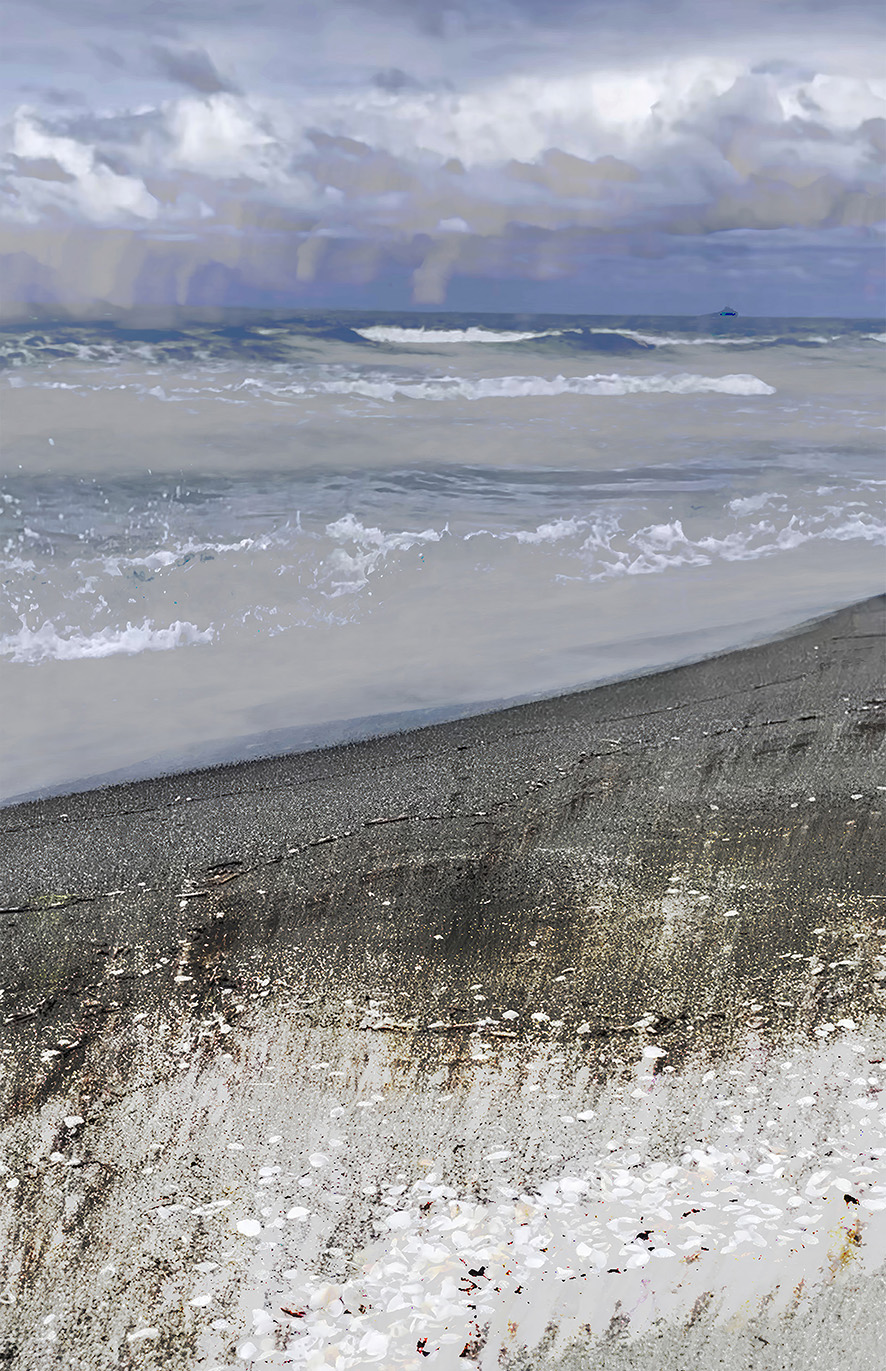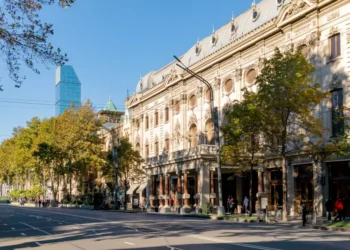Having written last week about photography as a tool for surrealism, I now realize that I have much more to say on this subject, including new images from those several days my wife and I spent recently on a short break on the Black Sea coast. The sound and sight both of the endless crashing waves certainly are therapy to the soul.

Another way of producing “unreal” photographic images is to import video frames into your photographic editing program (in this case, Photoshop). You end up with a large set of layers. Here your image’s pixel size is usually more limited: I shoot video on my iPhone at 1920 pixels high. So I usually upscale these images as a last step, to enable me to offer them as prints or digital files quite a bit larger than this.

Video flies have a standard frame rate of about 30 frames per second. So, unless your video is very short indeed, Photoshop will balk at producing a file with more than 500 layers in it. But that’s still a huge set of images to play with. I was holding the phone in my hand, not fixing it on a tripod; but doing my best to keep it still nonetheless.

I’ve been using an Overlay blend mode, with 1% opacity per image, so as to let each layer have a small but definite influence on the whole resulting image. The result certainly IS surreal: something between a photograph and a painting, in both content and colors/tones. Something you simply cannot see in real life, simply because it’s a composite of many different images shot over a small time period, and then set to influence each other. You might say that it’s based on a photograph, but be unable to explain how exactly it deviates from this. Which is fine with me.

So, not striving for anything able to be called a realistic image at all, I’m freed from the constraints of normal photography, using this medium simply as a starting point. This might be said of all photography; but there’s also some kind of multi-dimensional spectrum with some images closer to perceived reality and others definitely further away from it. The dimensions could include over- and under-saturation (with “normal” colors in the middle), hue shifts, freezing or blurring of the subject, and many more directions of alteration. We end up, this time, with images which might have been painted instead of photographed.
Having moved away decades ago from a working pottery studio of which I was a part (in Canada), and also from other communities of artists and media, I found myself left with the super-portable media of photography and writing. These both can be done anywhere, so they travel with me. Now that I’ve also begun embracing a camera phone alongside my “big” digital camera, using the phone’s video output for still images, another logical step to take will be using the camera to shoot larger-size video, or sets of still images at full-scale (4000 by 6000 pixels) and using these frames for both video production and still image layering.

I hope this isn’t too technical. It’s the musings of a mind at play, using that tools at hand in unconventional ways, moving past what the manual tells me I can or “should” do, stretching the envelope to see how far we can go before it snaps or produces something really interesting. Close to that snapping point, I think, is what I seek. Almost too much. But not quite. Genre-crossing and, hopefully, reasonably new and unexpected. I don’t need AI to produce fantasy: I am quite capable of imagining, and realizing, it myself.
Blog by Tony Hamner
Tony Hanmer has lived in Georgia since 1999, in Svaneti since 2007, and been a weekly writer and photographer for GT since early 2011. He runs the “Svaneti Renaissance” Facebook group, now with over 2000 members, at www.facebook.com/groups/SvanetiRenaissance/
He and his wife also run their own guest house in Etseri: www.facebook.com/hanmer.house.svaneti














